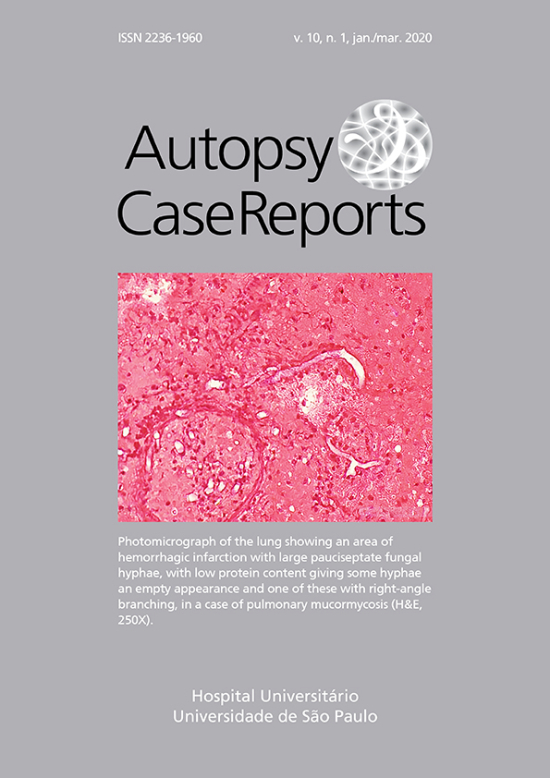Pulmonary alveolar microlithiasis: Incidental finding - should we Ignore?
DOI:
https://doi.org/10.4322/acr.2019.133Keywords:
Incidental Findings, Autopsy, Calcification, PhysiologicAbstract
Pulmonary alveolar microlithiasis (PAM) is a rare entity, presenting mostly as an incidental finding. This disease has an autosomal recessive inheritance with inactivating mutations in the gene “solute carrier family 34 member 2”. The present study was conducted to bring attention to this rare though preventable disease. The study was a cross-sectional descriptive study, conducted at the Department of Pathology, of a tertiary care hospital in New Dehli-India. PAMs were incidentally seen in two patients diagnosed with micronodular hepatic cirrhosis leading to reanalysis of 212 autopsies, retrospectively. Statistical analysis was done using Stata 14.0. We observed three forms (Type A, B and C) of round hyaline bodies measuring in 200-800µm diameter with thin delicate, radiating fibrils. These bodies were PAS positive, showed black discolouration of the pigment with von Kossa stain and birefringence on polarized microscopy using Congo red stain, however the refringence was light green as compared to apple green birefringence seen with amyloid deposition. PAM has a slow progressive course leading to a high rate of incidental detection. Drugs known to inhibit the micro-crystal growth of hydroxyapatite may slow the disease progression. The family members of patients with PAM may also be kept on follow up with regular imaging. Key messages: It is important to bring out the incidental finding as, seemingly innocuous observations may provide valuable insight into incurable diseases, especially rare diseases.
Downloads
Published
Issue
Section
License
Copyright
Authors of articles published by Autopsy and Case Report retain the copyright of their work without restrictions, licensing it under the Creative Commons Attribution License - CC-BY, which allows articles to be re-used and re-distributed without restriction, as long as the original work is correctly cited.



